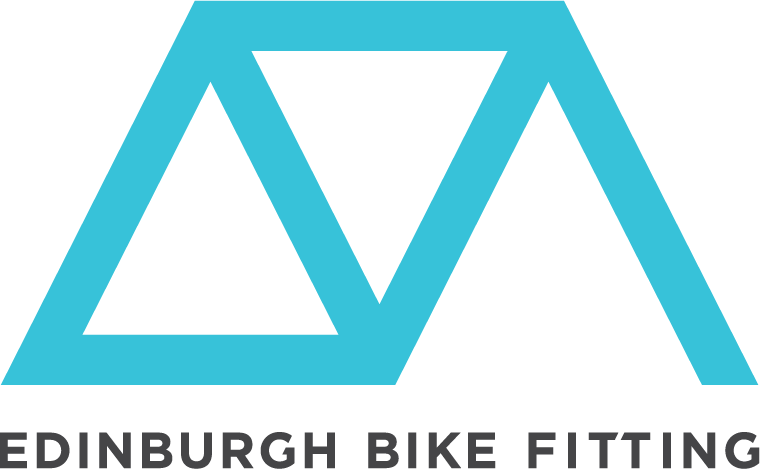Integrated Biomechanics in Bike Fitting
Cycling seems like a seemingly simple movement, but the human nervous system has no "pedal stroke" program installed.
Movement allows the body to engage with the pedal and transfer power generated chemically in a muscle cell into the drivetrain of a bike. Awareness and also absorbing of movement allows your core to stabilise your torso as you negotiate a turn in the road or to lean into a handlebar with more force as a corner tightens up on you on a faster descent. When it comes to the pedal stroke, as the body coordinates the extension of the hip knee and ankle against the pedal with the variations in torque in the pedals and gradient on the road and pelvic posture on the saddle coming out of perfect alignment at some point on the bike is a certainty, not a probability.
Tracking knee flexion and extension in the pedal stroke with a kinematic graph
When it comes to making a smooth optimal pedal stroke feel as smooth and natural as possible in essence we are trying to achieve a flow state. Flow is found by a trial and error practice where one is constantly changing joint angles, sequencing, entries and exits, and the movements contained in a given movement pattern. this variability in movement allows the body to explore a skill and find the most efficient path and develop a coordination pattern. Additionally, it is key that one’s practice is deliberate in this effort and that the focus is on quality and exploration of the movement versus trying to get a certain amount of work done in a given period of time, play around with your pedal stroke a little and work on getting it feeling good. In a bike fit context, this can be experimented with by changing saddle height, shoes, cleat positions, saddles, handlebar shapes, etc to help you with working your way through the movement. But out on the road, different postures can be explored; changing the angle of the pelvis and leaning into the bars more or less, or finding the hamstrings actively on the pedal when riding…
Tracking the movement of a knee through the pedal stroke highlights the variation of movement in every pedal stroke.
When trying to develop flow in a movement practice, many people are hindered because they perceive that there is a right or wrong way to move. Despite the fact that there are multiple ways to move - the degree of safety, stability and economy is variable - the truth is that there is not a right one. Even if there were a 'perfect standard' of movement no one would be able to meet it. In order to better understand movement, most people pick skills they want to cultivate. Then they learn the muscles involved, how to breathe in that pattern, how to brace, how to relax.. and as this process unfolds, people aren't always conscious of it. As a result, they often can't transfer these skills to other movements quickly. But, by taking a step back, we can see the big picture and individual skills become easier to learn. For example, if someone wants to improve their pedal stroke, where do they start and how do they identify limitations or create progressions? One way to tackle this issue is to work through the skill in a stepwise fashion focusing first on movement freedom, then strength, endurance, and finally variability. In this context:
Freedom - encompasses the ability to access the relevant ranges of motion to perform a movement safely and without significant mechanical compensations. For example, having sufficient range of motion in the hamstrings to be able to tilt forward enough on the saddle to get onto the drops without compensating through the upper back.
Strength - is the ability to support oneself through the entire functional range of motion for a given movement without any mechanical aids or supports. For example, having the core and strength in your legs to push on the pedal when the gradient of the road increases or having the strength to support your torso at a given handlebar height or drop.
Endurance - is the ability to withstand repeated stressors in a given movement pattern. For example, having the ability to tolerate a meaningful amount of pedal stroke volume in training week after week without an increased risk of calf, hamstring, tricep, or knee injuries.
Variability - is the ability to react to changing movement demands and stabilise. For example, having the ability to create effective compensatory movement patterns under fatigue, without injuring oneself, or having the ability to transfer a given skill to a context other than that which has been previously practiced.
No one is perfect or symmetrical, in fact a body is designed asymmetrically leading to compensatory movement patterns every time we move, in contrast a bike has a level of symmetry that will always present a challenge for a body to adapt to in perfect harmony. Here at Edinburgh Bike Fitting we can analyse your movement on a bike qualifying your movement and accounting for your limitations to move you into your most sustainable and comfortable position.
If you are interested in more information or would like to schedule a bike fit or training consultation with us then please contact us via email - contact@edinburghbikefitting.com We can track and parse out movement performance limiters and assessments in every bike fit and we can offer training plans in order to improve these limitations over time.


